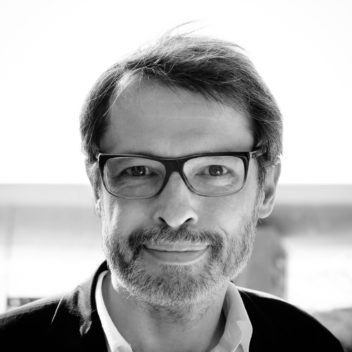
Double Canon: the publications of Olnick Spanu
A publication is at once a document and the extension of a curatorial endeavor. The modalities for creating a publication are, first and foremost, to publicize and to document artistic undertakings, and on the other hand, to create a locus unto itself, one that is able to establish a dimension that is mobile in space and that lasts as time passes. Even with the advent of the digital age, the paper document has retained its importance in the art world, perhaps not because of the information that it retains that has largely been converted to electronic format as well, but precisely for its aptitude for procuring a continuation and an extension of artistic production.
The relationship between artist and place is borne out clearly in the set of publications dedicated to the collection of the Art Program. This is a series of site-specific projects dedicated to the location in Garrison, in the heart of the Hudson Valley, for which the dialogue with nature and history constitutes the primary concern of the works of art undertaken there. Few places offer so much from both perspectives: it is, on the one hand, an important site for American painting, and on the other a region full of history. The artists attentively study the particularities of the place and then translate these ingredients into works of arts. This important process is attested to in the careful documentation that comprises the accompanying publications, which seek precisely to sketch out the rapport between artist and locale.
The relationship between nature, history, and art is therefore a canon on which the Olnick Spanu Art Program has been expounding for several years; an equilibrium and an intensity which serve very much, indeed, like a canon for the artists who enter into dialogue with the place. A work that embodies this attention towards publications is Stefano Arienti’s Biblioteca (Library), produced in 2011, in which many publications— particularly those of artists—are transformed into terracotta bricks and form minimal structures in the woodland setting. The metaphor of the weight and the enduring quality of books places this work at the heart of the context of publications, which are not just an integral part but also prove an extension of the work, fixed in time.
The books, therefore, also form a collection, a repository that collects the moments and attestations that played key roles in the different phases of the realization of the works of art in the park. They document simultaneously the passage of time and the various stages that allowed for the realization of these works. A library collects, most of all, emotions, which it manages to conserve in a delicate and dynamic form. Every publication becomes a story, a tale that posits art at the center of the park.
If the setting is one canon for a place of art, the other canon is the cornerstone formed by its series of publications, which in this case look to the masterful Massimo Vignelli and are curated by Yoshi Waterhouse. His unmistakable style succeeds, through simplicity, in producing a unique quality of vigor, precision, and clarity, a quality widely associated with the Vignelli conception of canon. A structure as a space that emphasizes its contents: indeed, his canon seems to be an architecture for images and texts. Graphic design becomes an indispensable component of art. Another essential publication is Venetian Glass, which addresses the organization’s magnificent collection of Murano glass. Also of note is the recent volume on the architecture of the site in Garrison, I Want to Be an Architect, by architect Alberto Campo Baeza.
The realization of these printed publications has been accompanied by the production of numerous documentary films on DVD that chronicle the organization’s artistic and expositional projects, and that bear lasting witness to them.
The Olnick Spanu canon continues to develop along several different trajectories, from the pursuit of the great modern glass and ceramics tradition to the ongoing support of the creative endeavors of Italian artists. The organization’s publications unite these various elements in a single discussion, in which the canon of art, in interdisciplinary fashion, becomes an experience superimposed onto the local landscape.
–Lorenzo Benedetti, 2016
Curator